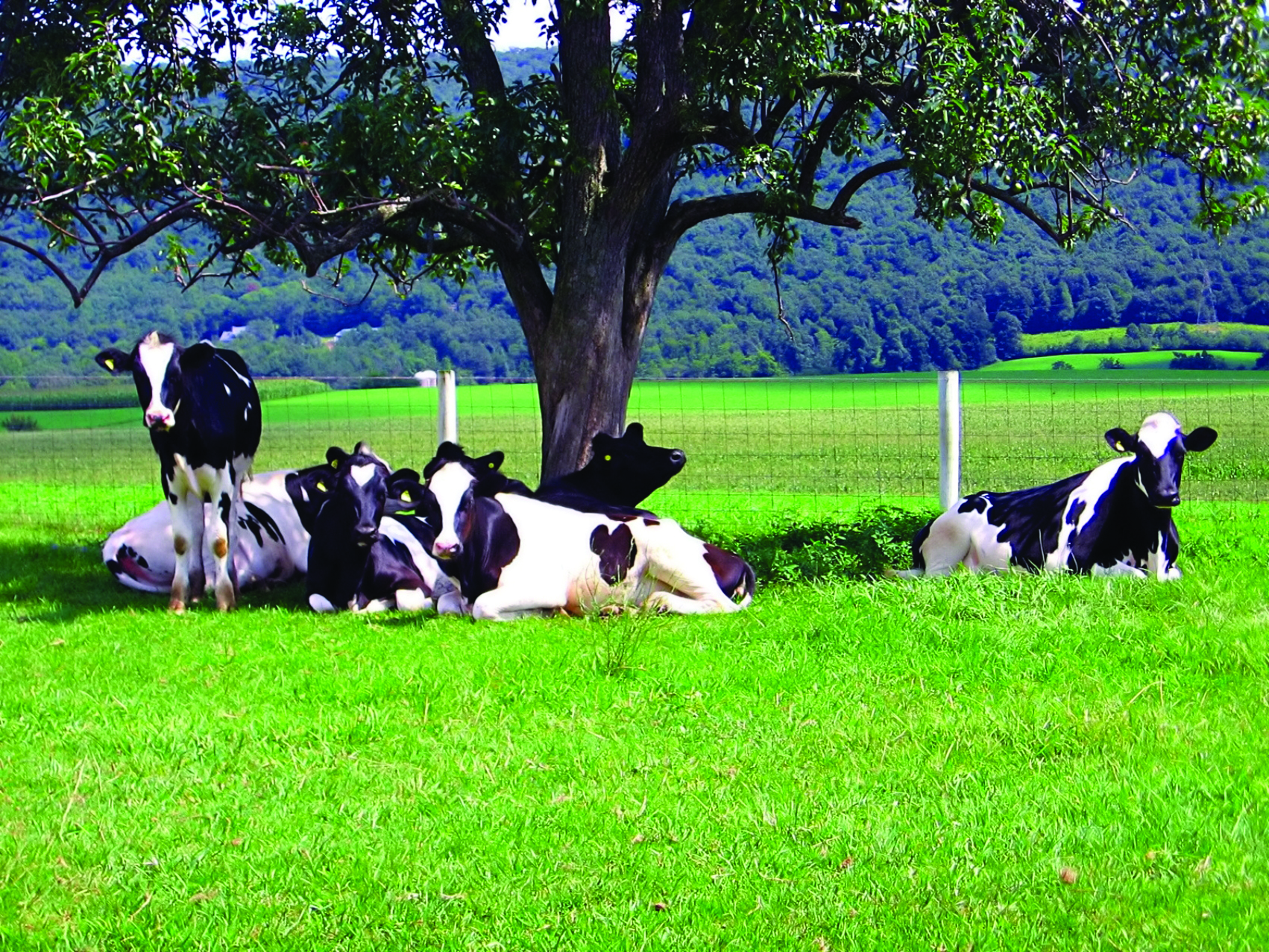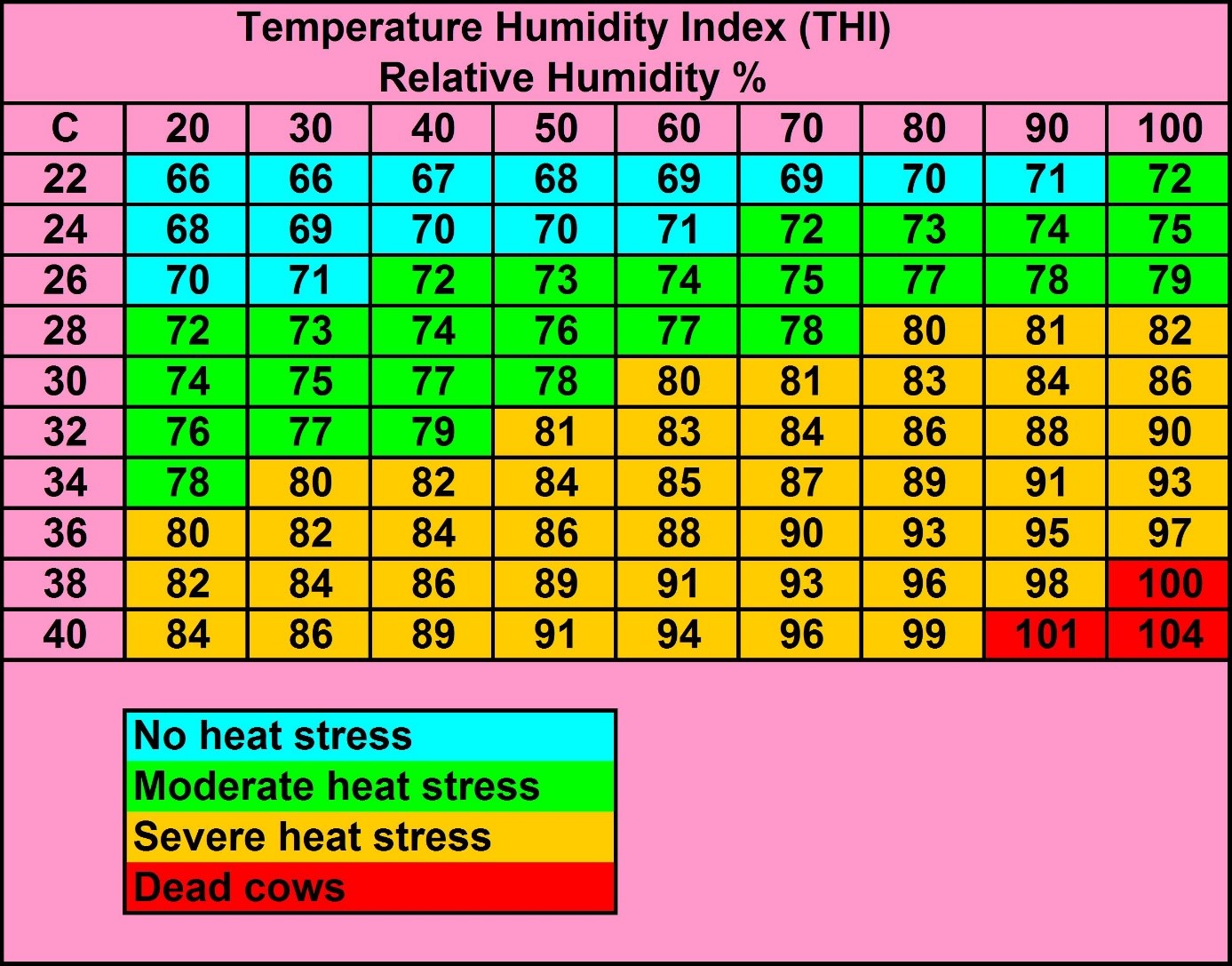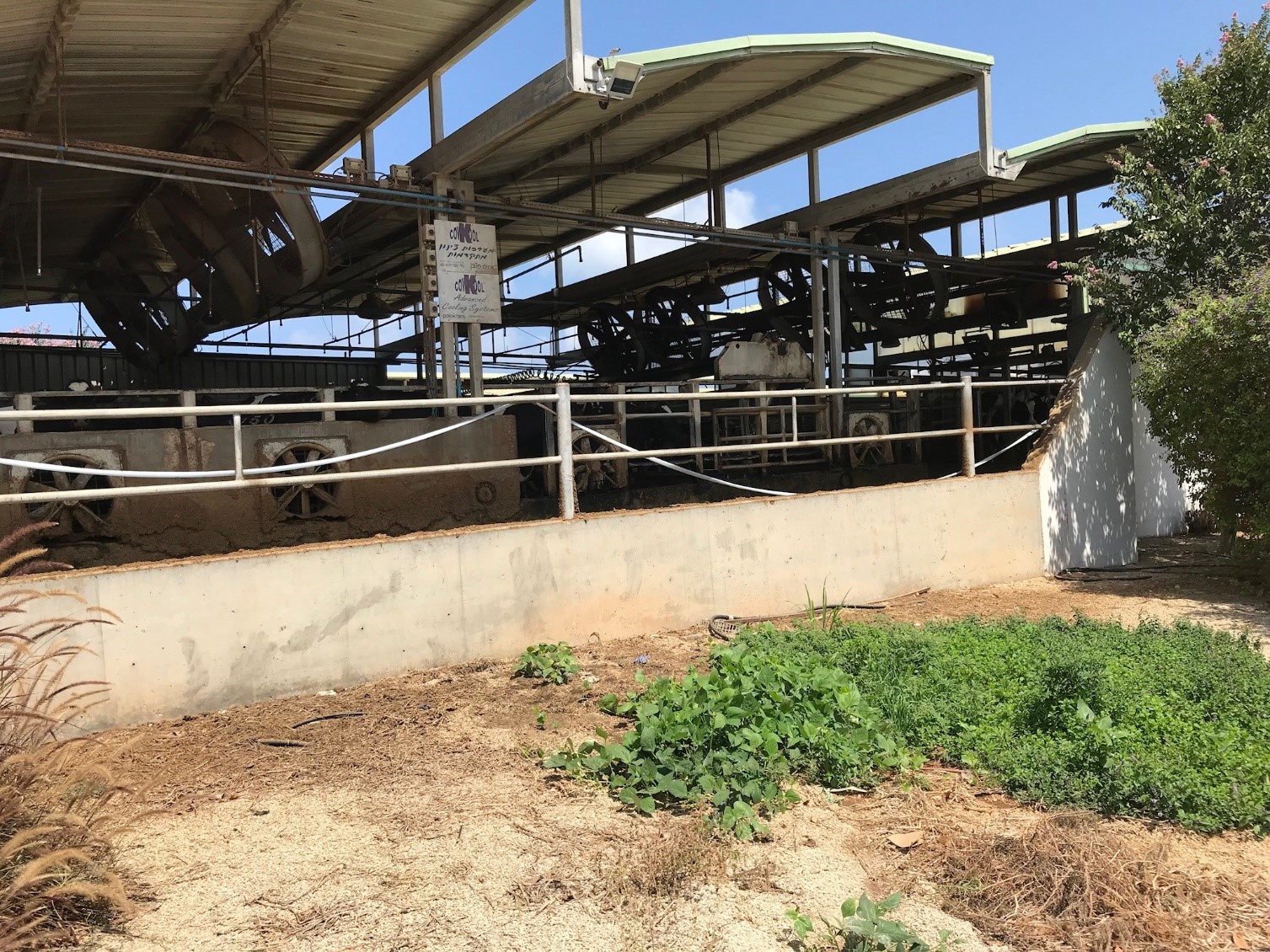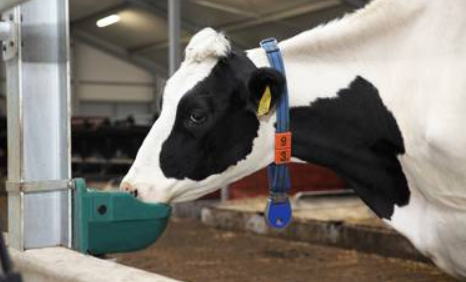Article: 7th of August 2020 by veterinarian Dr. Wouter Germis.

Hot summer months are here and it’s always a risky period for our animals as they easily can suffer from heat stress. Temperatures that seem ok and pleasant to us may be experienced totally differently by our cows. They don’t have the possibilities to take a cool dive, drink an iced tea or sometimes don’t even have access to a bit of shade. Animals that become heat stressed will suffer from an impaired immunity system which can lead to many other diseases and malfunctions like hoof problems, mastitis, fertility issues and many more.
Thermo humidity index
To know if an animal is at heat stress risk, it’s important to look at the thermo humidity index or THI. It combines the ambient temperature with the relative humidity (fig 1 THI-index source: Nadis). The average temperature and humidity % can be very different by region and country. If we look at a country like Belgium, the average humidity is around 72%. So, if we look at the graph, this means that at temperatures above 23 degrees Celsius animals are already in a state of moderate heat stress. If temperatures rise above 28 degrees Celsius, cows will suffer from severe heat stress if we don’t provide them possibilities to cool down. There are a lot of publications that investigated the THI threshold for dairy cows. A very recent publication from this year mentions a heat load threshold for respiration rate at a THI of 65 in lying cows, and in standing cows at a THI of 70 (Severino Pinto et al., 2020). Other publications mention a THI threshold of 68 (Zimbelman et al., 2009).

There are many ways to help our animals cool down and prevent heat stress, this is no rocket science and most people are aware. But nevertheless, I believe it’s our job as professional advisors to keep repeating this message as each year we still see lots of animals that suffer from this stressor. The 3 major tools for a dairy manager to prevent or reduce heat stress are water, air and feed.
Homeothermic
A cow is homeothermic and her normal body temperature lays around 38.8° Celsius. The comfortable temperature zone of a high producing dairy cow lays between minus 5 degrees and plus 22 degrees. To cool down a cow, and prevent that her body temperature raises too high, what can we do?
- Reduce radiant heat by providing shade, by watering the roof plates
- Improve heat loss through convection: optimize natural ventilation, install fans
- Improve heat loss through conduction: install sprinklers
- Improve heat loss through evaporation: provide enough drinking water/ sprinklers
Water and air are two important means to control the cows’ body temperature. The way we provide water and air are essential and will determine the success of our management actions.
Air
If we talk about air the best position of the fans is situated above the cubicles to ensure maximum of resting time. The goal should be to reach a windspeed of 2 to 3 meter/second above the cows. Longer resting times means higher milk production. Also, don’t forget the waiting, the milking parlor and the dry cows. Enough airflow reduces the load of flies and cows are more likely to stand still during milking. Not only the cows but also the milking staff will be extremely grateful when you optimize the ventilation in the milking parlor. Dry cows are often forgotten when we talk about heat stress but a very nice study that took 10 years, shows that maternal heat stress during the late gestation reduces daughter survivability and milk production for up to 3 lactations, even production of granddaughters will be negatively affected (J. Laporta et al., 2020). Regarding the waiting area I saw a beautiful example in Israel. The cows received two times a day an additional 15-minute cooling down treatment. In the waiting area they hung up a whole bunch of fans and installed an additional sprinkler system. By applying this protocol, they were able to maintain their high production level throughout the hot summer months.

Water
If we talk about water, the normal daily water intake for a cow is around 25 litres/ 500 kg bodyweight. For each litre of milk produced, she needs an additional 2 litres of water. So, if we do the total calculation, we can say that a high producing dairy cow in a temperature comfort zone needs about 100 to 150 litres daily. However, when outside temperatures are raising, the daily water intake will increase up to 40%. This means that the water intake in severe heat stressed cows can reach up to 200 litres/day. Therefore, it’s essential that we provide not only enough drinking volume, but also enough drinking space for each animal. Supplying enough water, will ensure a good dry matter intake and a good rumen activity. Cows have an extremely good sense of taste so provide fresh and good quality water, ideally at a temperature of 18°. One fast filling trough drinker per 15 cows or one reservoir trough per 20 cows is advised.

Feed
If we talk about feed, when the temperature goes up and animals become heat stressed, feed intake will go down. Cows are less active, start panting, sweating and lose saliva. In severe cases cows can even start to foam.
Saliva is essential for buffering the rumen, so we need to add sodium bicarb or other buffers to prevent rumen acidosis. Other management adaptations can be feeding two times a day, early in the morning and late in the evening, when temperatures are the lowest. Added fat is important in combatting heat stress in hot climates and should be at the maximum amount that can reasonably be fed. This reduces the heat increment associated with alimentary tract fermentation and tissue metabolism which in turn reduces total body heat load. Rumen protected feed supplements can help to shift from less rumen to more intestinal digestion. Ensure adapted vitamin and mineral supplementation, as losses are substantial due to sweating, protein losing enteropathy and oxidative stress.
Summary
Heat stress occurs more often than we believe, and we need to take the required management steps to keep our animals cool. Water, air and feed are important tools to help reducing heat stress. And remember a happy cool cow will produce more milk, so be prepared!